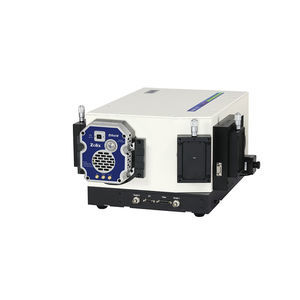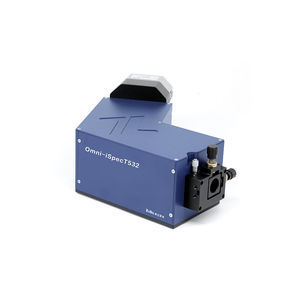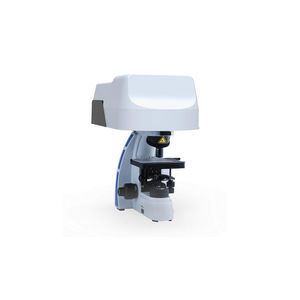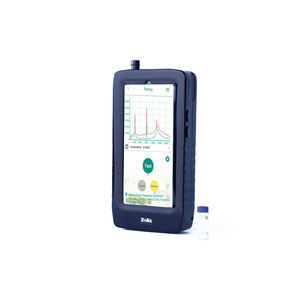
- Laboratory
- Physico-chemical analysis
- Raman spectrometer
- Zolix Instruments CO.,LTD
Raman spectroscope Finder 930 for clinical analysishalogenCCD

Add to favorites
Compare this product
Characteristics
- Type
- Raman
- Applications
- for clinical analysis
- Source
- halogen
- Detector type
- CCD
- Configuration
- benchtop
- Wavelength
532 nm, 638 nm, 785 nm
Description
Raman Spectroscopy is a scattering technique which analyzes the scattered light of different wavelength than the incident light to obtain the molecule structure of the analyte. When a incident laser light illuminate the sample, light collide material molecules and scatter. Most of the scattered light features the same wavelength with the incident light, only a very small amount scattered light( typically 0.0000001% ) at different wavelengths with incident light, which is inelastic scatter called Raman scatter. The scattered light frequency less than incident light is called Stokes scattering, the scattered light frequency bigger than incident light is called Anti-Stokes scattering, they are symmetrically distributed on both sides of the Rayleigh scattering
Details
Principle
Raman Spectroscopy is a scattering technique which analyzes the scattered light of different wavelength than the incident light to obtain the molecule structure of the analyte. When a incident laser light illuminate the sample, light collide material molecules and scatter. Most of the scattered light features the same wavelength with the incident light, only a very small amount scattered light( typically 0.0000001% ) at different wavelengths with incident light, which is inelastic scatter called Raman scatter. The scattered light frequency less than incident light is called Stokes scattering, the scattered light frequency bigger than incident light is called Anti-Stokes scattering, they are symmetrically distributed on both sides of the Rayleigh scattering.
The frequency difference v between the incident light and scattered light is called the Raman shift.
VIDEO
Catalogs
Finder 930
17 Pages
Other Zolix Instruments CO.,LTD products
Modular Raman Spectrometer
Related Searches
- Control software
- Windows medical software
- Spectroscope
- Acquisition software
- Spectrophotometer
- Benchtop spectroscope
- Compact illuminator
- Benchtop spectrophotometer
- Microscope illuminator
- UV-vis spectrophotometer
- Compact spectrometer
- Optical spectroscope
- Research spectroscope
- Spectrometer for the pharmaceutical industry
- Tungsten spectrophotometer
- Halogen illuminator
- Other light sources light source
- Raman spectroscope
- Clinical spectrometer
- NIR spectrometer
*Prices are pre-tax. They exclude delivery charges and customs duties and do not include additional charges for installation or activation options. Prices are indicative only and may vary by country, with changes to the cost of raw materials and exchange rates.









